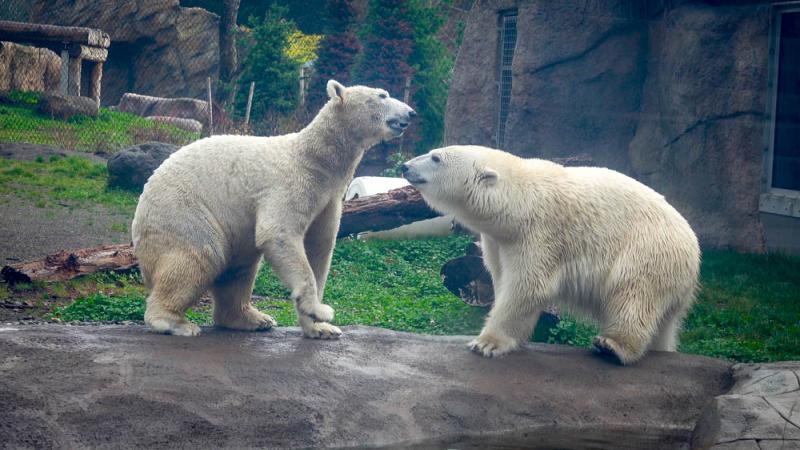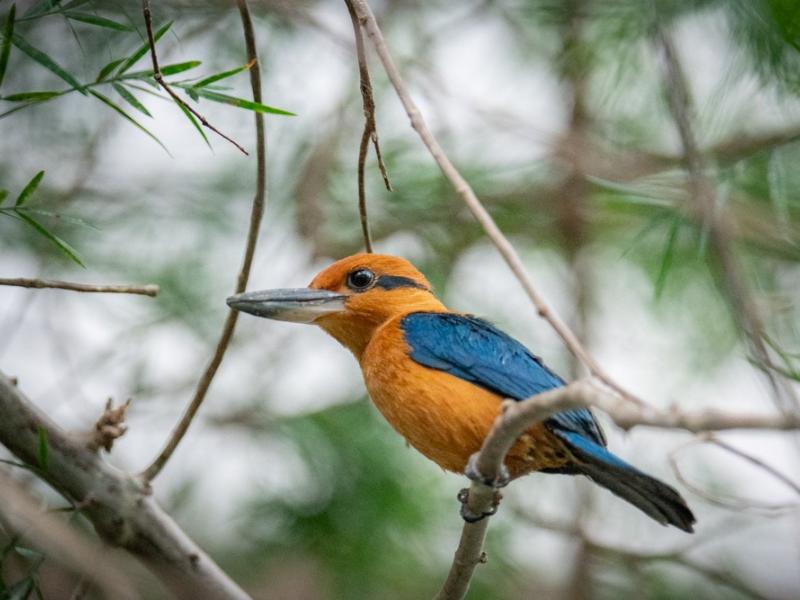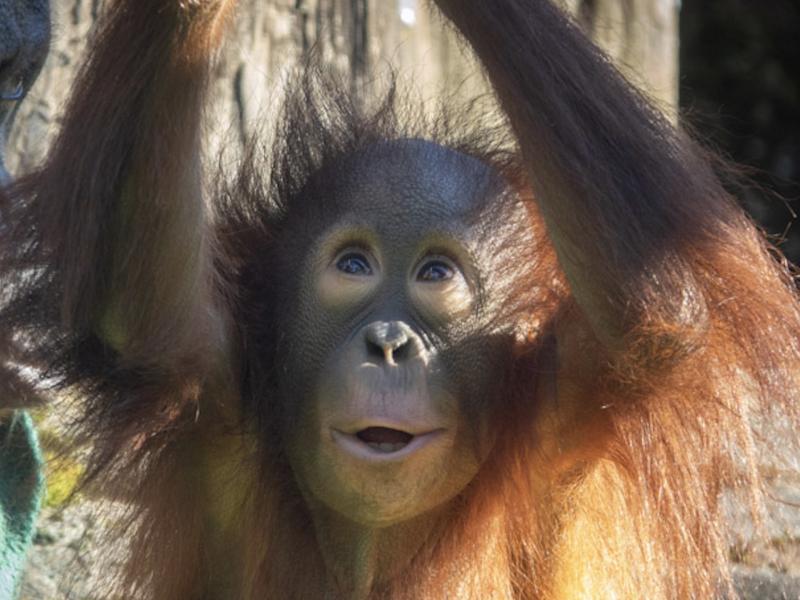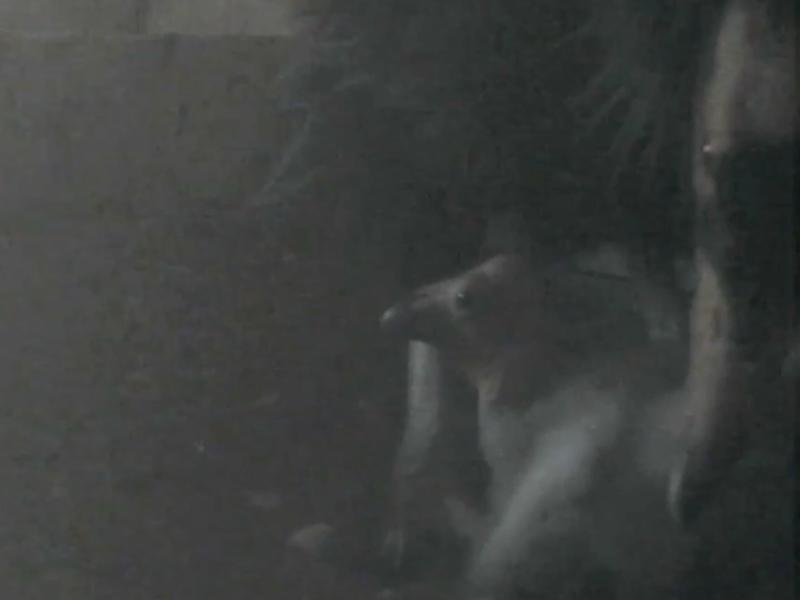Scientists test bear laser at zoo's Polar Passage

New technology could allow for safer monitoring of wild polar bears
Biologists working with the Oregon Zoo last month had the chance to see polar bears Nora and Amelia Gray in a new light: a laser beam. Researchers from the U.S. Fish and Wildlife Service, U.S. Geological Survey and National Park Service tested their state-of-the-art laser technology by scanning the zoo’s polar bears in their Polar Passage habitat. If effective, the laser scanning could provide a safe, non-invasive way to monitor bears in the wild.
“Currently the way we weigh bears is with a big metal tripod, and they have to be immobilized,” said Lindsey Mangipane, a polar bear biologist with the U.S. Fish and Wildlife Service. “We’re hoping this method will give us a way to evaluate body size of bears that doesn’t require capture and handling.”
Mangipane and her colleagues first learned that the National Park Service was imaging brown bears using 3D laser scanning technology in Katmai National Park, as part of Fat Bear Week. They wondered if the same technology could be used on polar bears in the wild, and they came to Oregon Zoo’s Polar Passage habitat to find out.
Because the zoo bears are weighed regularly by care staff, Mangipane and her colleagues can calibrate the laser technology against the known weights to determine how accurate it is. While Nora and Amelia Gray enjoyed some frozen treats, researchers trained their invisible scanning lasers on the bears from the roof of Polar Passage.
“Nora and Amelia Gray were so fun to work with,” said Mangipane. “And their care staff did a great job getting them in a good position that we could conduct the scans.”
Accurate information about wild polar bears’ body mass and condition could help researchers answer a lot of questions, according to Mangipane. Bears that are in good body condition have increased fitness levels and are more likely to have cubs. As sea ice in the Arctic retreats, this information becomes even more important in the effort to conserve wild polar bears.
This isn’t the first time polar bears at the Oregon Zoo have lent a helping paw to science. Nora enjoys her time in a swim flume designed to help scientists understand the caloric requirements of wild polar bears; and before moving to Portland, Amelia Gray was one of a handful of bears outfitted with a “Burr on Fur” — a prototype tech innovation designed by 3M to give conservation scientists a better way to monitor wild bears.
“We still have gaps in understanding how climate change is affecting polar bears, so it’s essential that the bears in our care help scientists learn more about their species,” said Amy Cutting, interim director of animal care and conservation at the Oregon Zoo. “Zoo bears are perfect candidates to help because they already participate in many health-care behaviors voluntarily and seem to find those experiences enriching.”
Indeed, much of today’s zoo-based polar bear science has its roots in animal-care advances at the Oregon Zoo, according to Cutting. In 2012, polar bears Conrad and Tasul became the first of their species to voluntarily give blood. The breakthrough was huge in terms of improved animal welfare and veterinary care, Cutting says, and it also opened the door to other possibilities.
After reading a news article about this milestone, polar bear scientist Karyn Rode contacted the zoo for assistance with her research in the Arctic. Polar bears are extremely difficult to observe in the wild, and Dr. Rode, a biologist with the U.S. Geological Survey’s Changing Arctic Ecosystems initiative, believed the zoo’s training advances presented a unique opportunity to fill critical knowledge gaps.
Tasul helped Rode learn how climate change was affecting the diets of wild polar bears, then assisted one of her USGS colleagues by wearing a high-tech collar to help calibrate tracking collars deployed on wild bears.
The collaborative efforts couldn’t come at a more urgent time. As climate change reduces Arctic sea ice, polar bears struggle to find and catch seals, making it harder for them and their cubs to survive. The species is classified as threatened under the U.S. Endangered Species Act, and the International Union for the Conservation of Nature’s Species Survival Commission has designated the species as facing a high risk of global extinction.
In 2018, Polar Bears International supported efforts of the Association of Zoos and Aquariums in forming the Polar Bear Research Council. Composed of zoo professionals and polar bear researchers, the council focuses on keeping research current with emerging scientific questions regarding wild bears. An updated Polar Bear Research Masterplan was completed in 2022 and can be found on the PBI website.
Polar Passage, where Nora and Amelia Gray live, is one of eight major projects made possible by a community-supported Oregon Zoo bond measure passed in 2008. Many of the habitat’s features were funded through donations to the Oregon Zoo Foundation, which supports zoo’s animal welfare, conservation and education efforts. To learn more or to make a gift, call 503-220-2493 or email foundation@oregonzoo.org.
More News

Zoo welcomes ultra-rare sihek kingfishers
The Oregon Zoo is home to many critically endangered species, but perhaps none as rare as its newest arrivals: a trio of sihek kingfishers.April 25, 2024

Jolene turns 2: Zoo to celebrate orangutan's 2nd birthday
The littlest member of the orangutan family is celebrating a big milestone this week: Jolene will turn 2 on Saturday.April 12, 2024

Seven chicks and counting: Zoo welcomes first condors of 2024
Seven fluffy chicks hatched last month at the Oregon Zoo’s Jonsson Center for Wildlife Conservation.April 5, 2024

